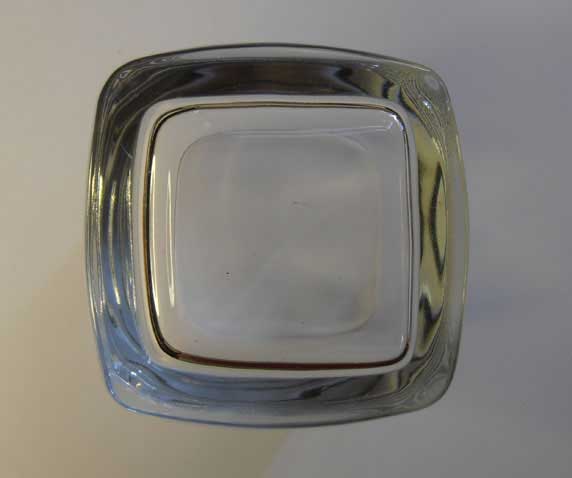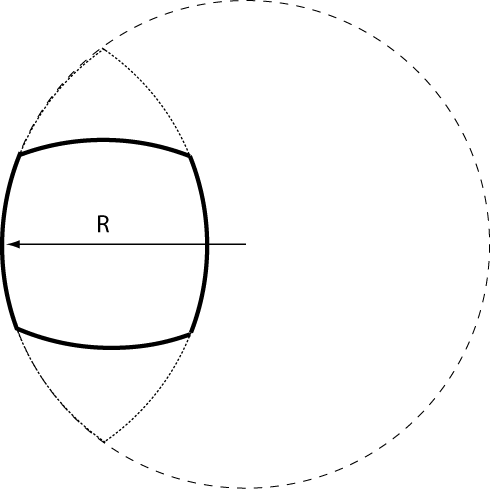Mirrors and lenses
Curved mirrors
Most experimental kits for optics will contain cylindrical convex and concave mirrors.
Flexible plastic mirrors also exist, but can be hard to find.
Fortunately there are several different types of suitable reflective adhesive tape available.
The two photographs below show two examples of this tape. The example on the right shows the highly reflective tape that some enthusiasts usefor 'pin-striping' cars. The 'chrome' version works quite well. The example on the left shows some reflective tape that is often used for decoration and for wrapping presents, particularly around the solstices. The best way to assess some tape is to look into it and see if you can see a clear reflection.
A concave cylindrical mirror can be made by sticking such tape around the outside of an appropriate glass or plastic jar.
A convex cylindrical mirror can be made by sticking tape to the inside of a plastic container that has been cut in half. If this turns out to be insufficiently rigid, a suitable slot can be cut into an intact container so that light can enter and exit.
.


The photos below show two examples made with flexible mirrors.
Lenses
It’s relatively easy to find a convex lens. Examples include magnifying glasses or magnifying lamps, Can also be found in old discarded optical instruments (telescopes, microscopes., binoculars, etc). Also in some spectacles, but make sure that are not the sort where the focal length varies across the lens. Another possibly are drinking glasses and flower vases.
Many shops sell cheap plastic glasses usually in the range of +0.5 dioptres to +3.0 dioptres.
The focal length can be easily measured by focussing the light from a distant object (often a ceiling light is suitable) onto a sheet of paper. Or you can use the sun, but be very carefu lnot to set the paper alight.
The focussing power of lens should be simply additive - this can be checked by comparing the focal length of individual lensas with the focal length hen both are used.
Plano convex lenses
A convenient way to make these is to use a hemi-spherical or spherical bowl filled with water.
The expected focal length can be calculated from the measured diameter of the bowl and the refractive index of the liquid that fills it.
This can be compared with the measured focal length.
Thick lenses
These are lenses where the thickness of the lens becomes comparable with the focal length. We can consider three types
Thick lenses with 2 convex faces
To demonstrate this I found 2 glasses with bases that had sides that were essentially sections of a circle - see figure.
See the photos below.


The radius of curvature of the two faces was determined by tracing the shape onto a sheet of paper, and comparing with a diagram on the computer screen.
The focal length was then calculated using the lens makers eqn.

The photograph below shows how the base of each drinking glass can be used as a magnifying glass.
t 
WARNING: The focal lengths of cylindrical and spherical lenses are similar to their diameters. If you put one in a sunny spot there is a good chance that the sun will be focussed onto something. I must admit to several scorch marks on my garden table from careless behaviour with such objects.
Cylindrical lenses
Possibilites include:
• a plastic rod
• Some drinking glasses have a heavy glass base that is cylindrical.
• many glasses have a cylindrical shape. These can be filled with water (or another liquid). If the glass is not perfectly cylindrical, be careful to use a section where the walls are vertical.
Spherical lenses
It is possible to find many solid spheres of glass or plastic. Otherwise a spherical container can be filled with water.
\Their refractive power is given by
Power of lens given by P = 1/f = (n-1)[1/R1 - 1/R2 + (n-1)d/nR1R2]
For a cylindrical or spherical lens R1 = R2 = R

